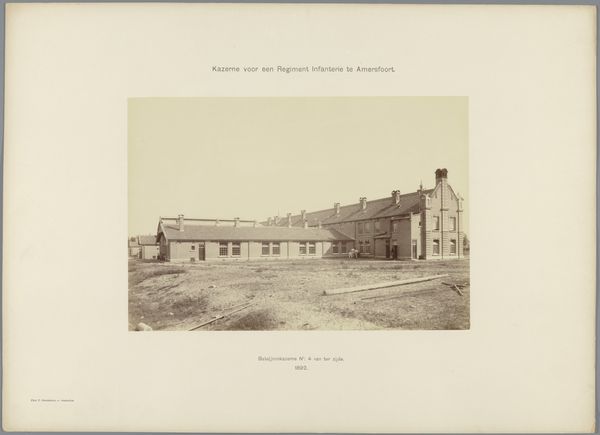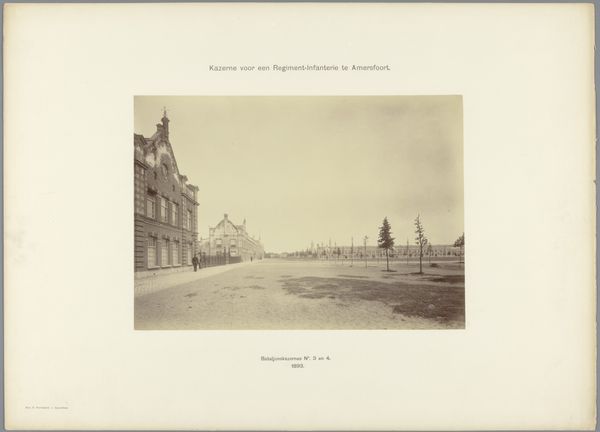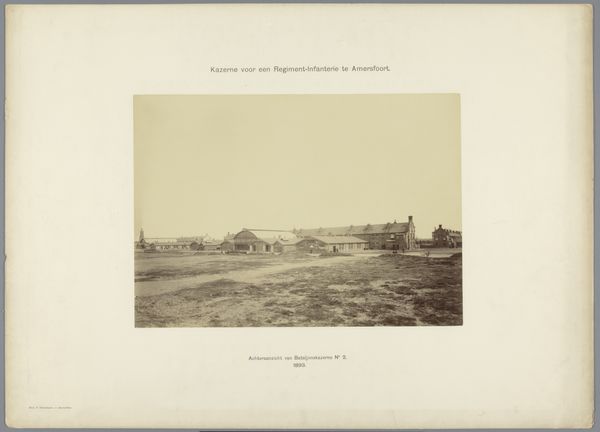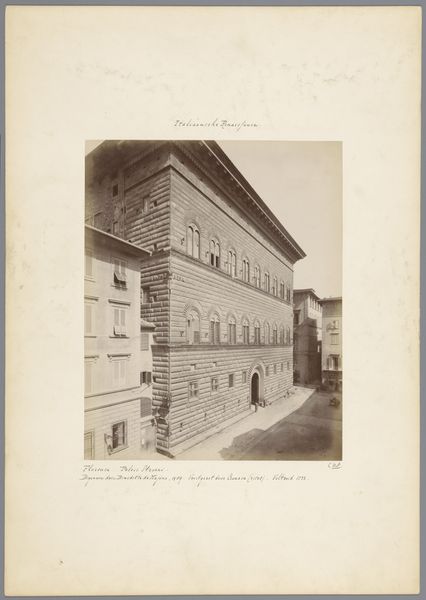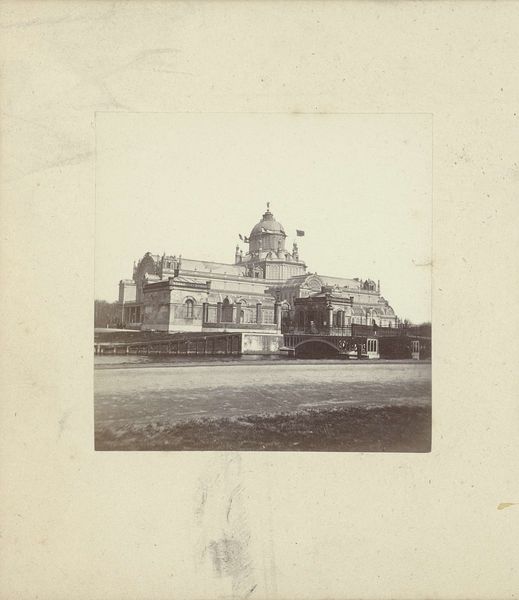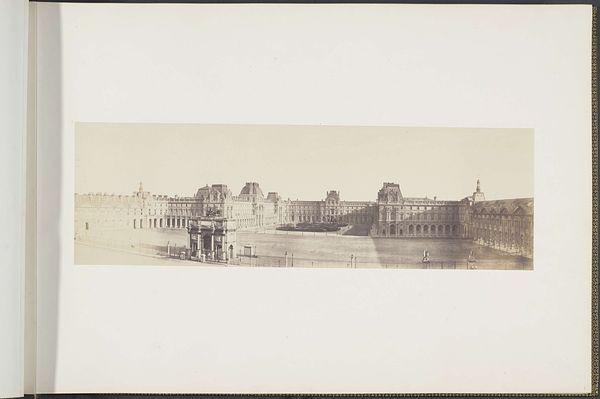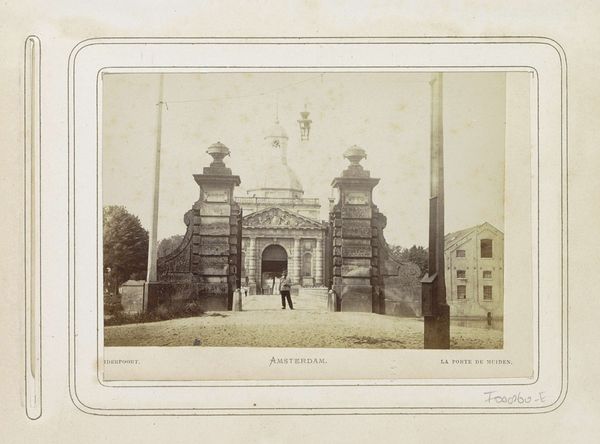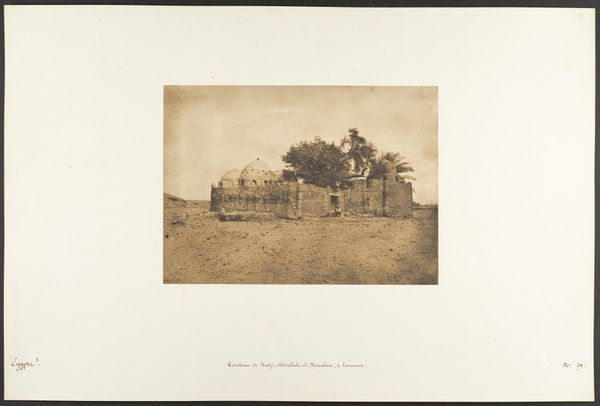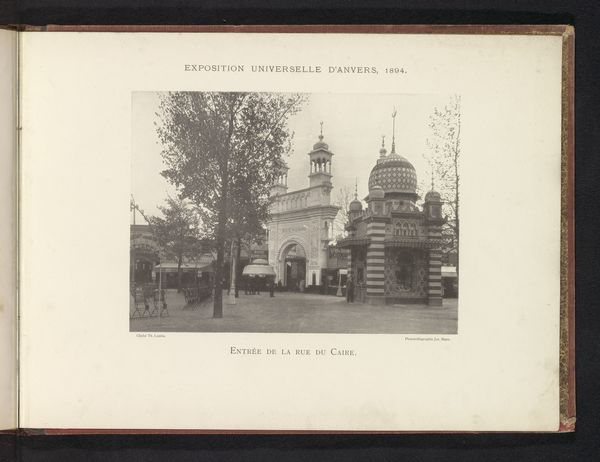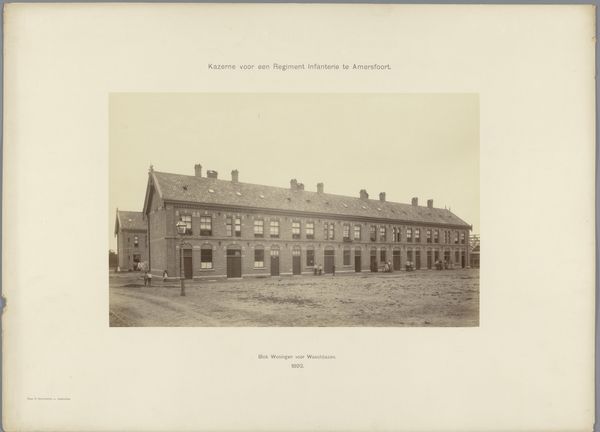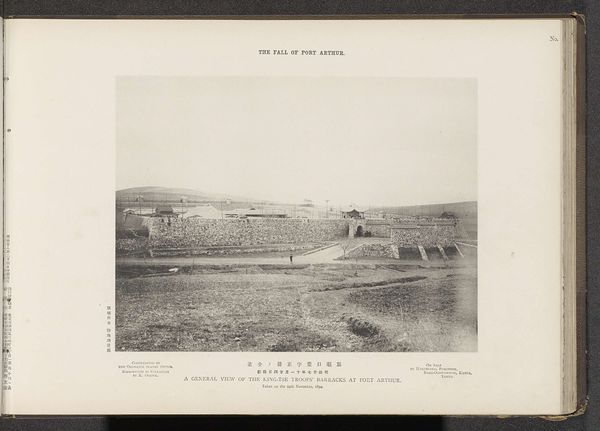
print, photography
# print
#
photography
#
cityscape
#
realism
Dimensions: height 48.5 cm, width 66 cm
Copyright: Rijks Museum: Open Domain
Curator: This is a photographic print of the "Kazerne voor een Regiment Infanterie te Amersfoort" - that's "Barracks for an Infantry Regiment in Amersfoort," taken around 1892, by P. Oosterhuis. Editor: It projects a peculiar mix of solemnity and rigid geometry—austere even, in spite of its decorative touches. Curator: I think we need to see it as a material document of power. The architecture broadcasts a certain social order, built quite literally into the bricks. Consider the resources—both human and natural—required to create such a permanent, imposing structure during that time. Editor: True, it speaks of Empire, industrial expansion. And the regimented rows of windows…they really do reveal the intent to discipline. Is there also a story of photographic production we might uncover? I wonder how readily available photography and its supplies were at this time in Amersfoort, and if that makes this photo elite. Curator: I think you are right to pick up on this. I would even extend the conversation and propose that we see the people represented within this historical moment not merely as subjects of discipline and industrial output, but how this representation reflects and shapes military culture, recruitment, and social control at the time in relation to class and gender expectations of duty and service. Editor: How might thinking about materiality allow us to reimagine and challenge traditionally defined spaces, even the barracks? To consider the unseen labors in constructing the building and photo and who can control representation through both art and architecture? Curator: The act of memorializing the regiment as something to admire also raises questions about who is granted visibility. Does the creation of such a photographic project solidify power relations and ideals about military prestige? Editor: Certainly, the creation of lasting architectural or photographic products and institutions inevitably perpetuates certain ideologies. Seeing art through this lens compels us to reevaluate what matters, as both representation and tangible resource. Curator: For me, it is an invitation to reconsider the complexities and power dynamics that permeate the photograph's content.
Comments
No comments
Be the first to comment and join the conversation on the ultimate creative platform.
